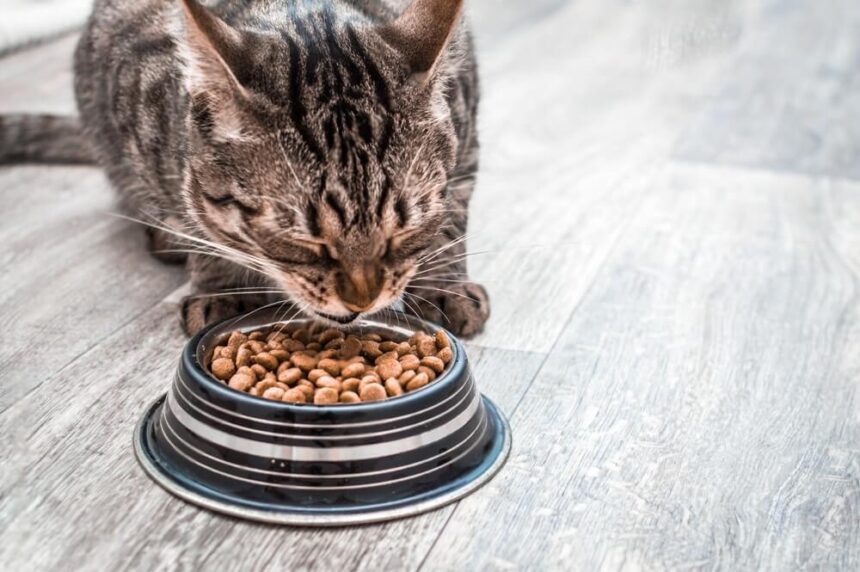How To Make Hard Cat Food Soft? There are a few reasons you might want to make hard cat food soft.
Maybe your cat is getting up there in years and has trouble chewing, or maybe you have a kitten that’s still getting its adult teeth in.
Whatever the reason, there are a few ways to make hard cat food softer without losing any nutrients or flavor.
Why Soften Cat Food?
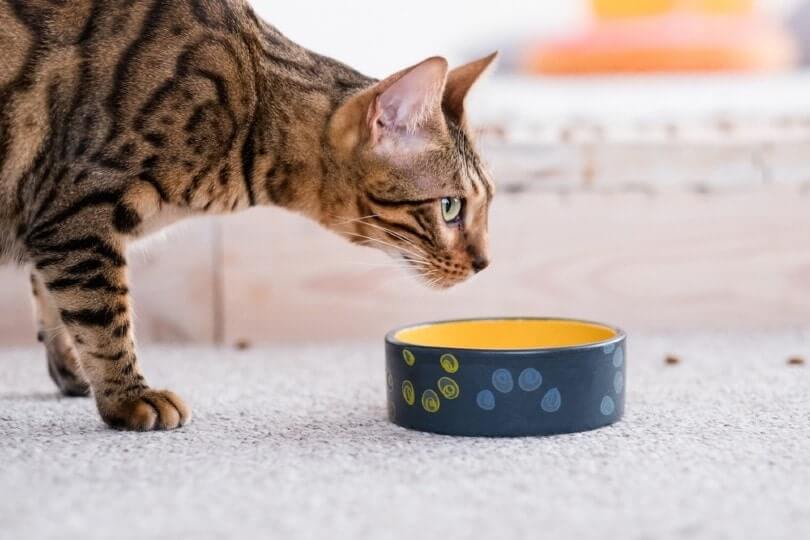
Before we dive into the how-to’s, let’s understand why you might want to make your cat’s food softer. There are a few reasons why this could be beneficial:
Dental Issues: Cats, just like humans, can experience dental problems that make it difficult for them to chew hard food. Softening their food can ease their discomfort and ensure they still get the nutrition they need.
Senior Cats: As our furry friends age, their teeth may become more sensitive or they may suffer from missing teeth. Softening their food can help them enjoy their meals without any hassle.
Transitioning Kittens: If you’re introducing solid food to a kitten, starting with softened cat food can make the transition smoother for their tiny teeth and delicate tummies.
Now that we’ve covered the why, let’s move on to the how!
How To Make Hard Cat Food Soft
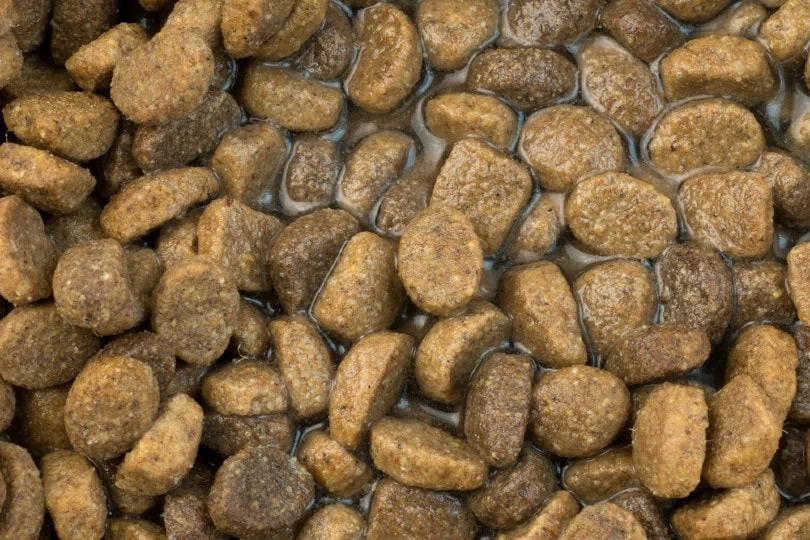
There are several effective methods to transform that crunchy kibble into a softer, more palatable meal for your cat.How To Make Hard Cat Food Soft
Adding Water or Broth
One of the simplest ways to soften hard cat food is by adding a bit of water or broth. Here’s how:
Place the Kibble in a Bowl: Start with the usual amount of dry food your cat eats.
Add Warm Water or Broth: Pour just enough warm (not hot) water or broth over the kibble to moisten it. Bone broth is a great option since it adds flavor and nutrients.
Let It Sit: Allow the mixture to sit for a few minutes until the kibble absorbs the liquid.
Stir and Serve: Give it a good stir and serve it to your cat. You can adjust the amount of liquid based on how soft your cat prefers their food.
Microwaving
Microwaving can also help soften cat food, but you need to be cautious not to overcook it, as that can lead to nutrient loss.
Place Food in a Microwave-Safe Bowl: Put the desired amount of dry food in a bowl.
Add Water or Broth: Add enough liquid to cover the kibble.
Microwave: Heat on medium for about 10-15 seconds.
Check and Stir: Stir the food and check the texture. If needed, microwave for a few more seconds.
Soaking in Water
If you’re not in a rush, soaking dry food can be an excellent method:
Warm Water: Add warm water to the kibble and let it soak for 5–10 minutes.
Consistency Check: Mash it with a fork to ensure it’s soft enough. Adjust water quantity as needed.
Using a Blender
For a smoother texture, consider blending:
Blender: Put dry food in a blender with some water or broth.
Blend: Blend until it reaches a soft, mushy consistency.
Adjust Liquid: Add more liquid if needed to achieve the desired softness.
What Can I Mix in Dry Cat Food to Make It Soft?
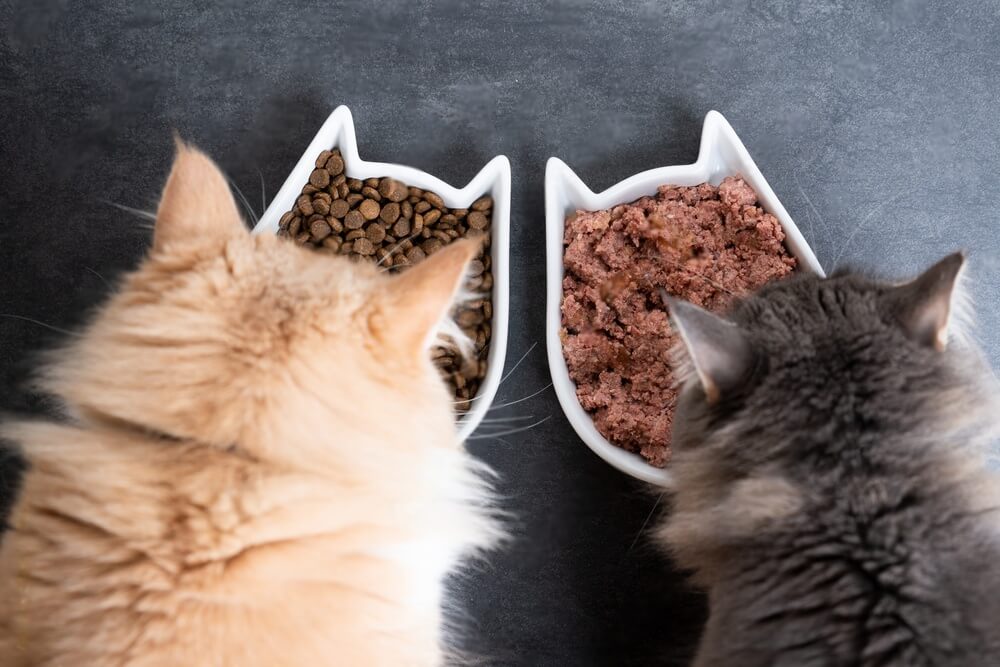
Another way to entice your cat to eat their hard food is by adding some delicious toppings. Here are a few ideas:
Canned Tuna: Mix a small amount of flaked canned tuna into your cat’s hard food. The aroma and taste of tuna will make it irresistible!
Chicken Baby Food: Opt for plain chicken baby food without any added seasonings. Just a dollop mixed with the hard food can do wonders.
Pumpkin Puree: Pumpkin is not only tasty but also aids in digestion. Add a spoonful of pumpkin puree to soften the cat food and give it a nutritional boost.
Canned Food: Mix a small amount of canned cat food with the dry kibble.
Mash Together: Use a fork to blend the mixture until it reaches a consistency your cat likes.
Another option is to mix in some baby food. Make sure it’s plain, with no added spices or onions:
- Mixing: Blend a spoonful of baby food with the dry kibble.
- Mashing: Mash together until it’s soft.
Should I Soak My Cat’s Dry Food?
Whether or not to soak your cat’s dry food is a personal decision that depends on some factors.
Some people soak their cat’s dry food to make it palatable, while others find that their cats prefer the crunchy texture of unsoaked kibble.
Some believe that soaking dry food can help to make it more digestible for cats.
If you are considering soaking your cat’s dry food, you should keep a few things in mind:
Use Warm Water: Avoid hot water, which can make the kibble too mushy.
Short Soak Time: Only soak the kibble for a few minutes; otherwise, the food will start to break down and lose its nutritional value. And be sure to drain off any excess water before giving the soaked kibble to your cat.
Check for Freshness: Ensure the soaked food is fresh and hasn’t spoiled.
How Do You Keep Cat Food Soft?
Wet cat food can go bad quickly if it’s not stored properly. Once opened, canned wet food should be refrigerated and used within two to three days.
Dry food doesn’t usually spoil but can lose its flavor or become hard and stale.
To keep your cat’s food fresh and tasty, follow these tips:
Refrigerate Wet Food: Store opened wet food in the fridge in a covered container.
Use Freshly Mixed Food: Mix dry and wet food just before serving to maintain texture.
Proper Storage: Keep dry food in a cool, dry place and use it within two months of opening.
How Do You Make Dry Food into Wet Food?
One common way to make dry food into wet food is by adding water or another liquid.
This can be done by simply stirring the dry food with a spoon or spatula until it is evenly mixed with the liquid.
Another method is to place the dry food in a bowl and slowly pour the liquid over it while stirring.
The amount of liquid used will depend on how moist you want the final product to be.
If you are making wet food for an animal, such as a cat or dog, it is important to use only water or liquids that are safe for them to consume.
For example, do not add milk to wet food for cats, as they are lactose intolerant and could become sick.
Also, don’t add too much liquid, as this can make the final product soupy and unappetizing.
Practical Tips and Tricks
Making the transition to softer food can take a bit of trial and error. Here are some practical tips to help you along the way.
Gradual Transition
Cats can be particular about their food. If you’re switching from dry to softened food, do it gradually:
Mix It Up: Start by mixing a small amount of softened food with their regular dry food.
Increase Gradually: Slowly increase the ratio of softened food over a week or two.
Monitor Reactions: Keep an eye on your cat’s reaction and health. If they seem resistant, try a different method of softening.
Flavor Enhancements
Sometimes, it’s not just about the texture. Enhancing the flavor can make a big difference:
Fish Oil: A small amount of fish oil can make the food more appealing and add healthy fats.
Cat Treats: Crumbling a few cat treats on top can entice picky eaters.
Aromatics: Warming the food slightly can enhance its aroma, making it more attractive to your cat.
Storage and Freshness
Keeping the softened food fresh is essential:
Refrigerate Leftovers: Store any leftover softened food in an airtight container in the fridge. Use it within 24 hours.
Serve Fresh: Prepare only what your cat will eat in one sitting to maintain freshness and appeal.
Avoid Bulk Soaking: Don’t soak large batches of food in advance. It’s best to prepare it fresh each time to retain nutrients and flavor.
Special Considerations for Different Life Stages
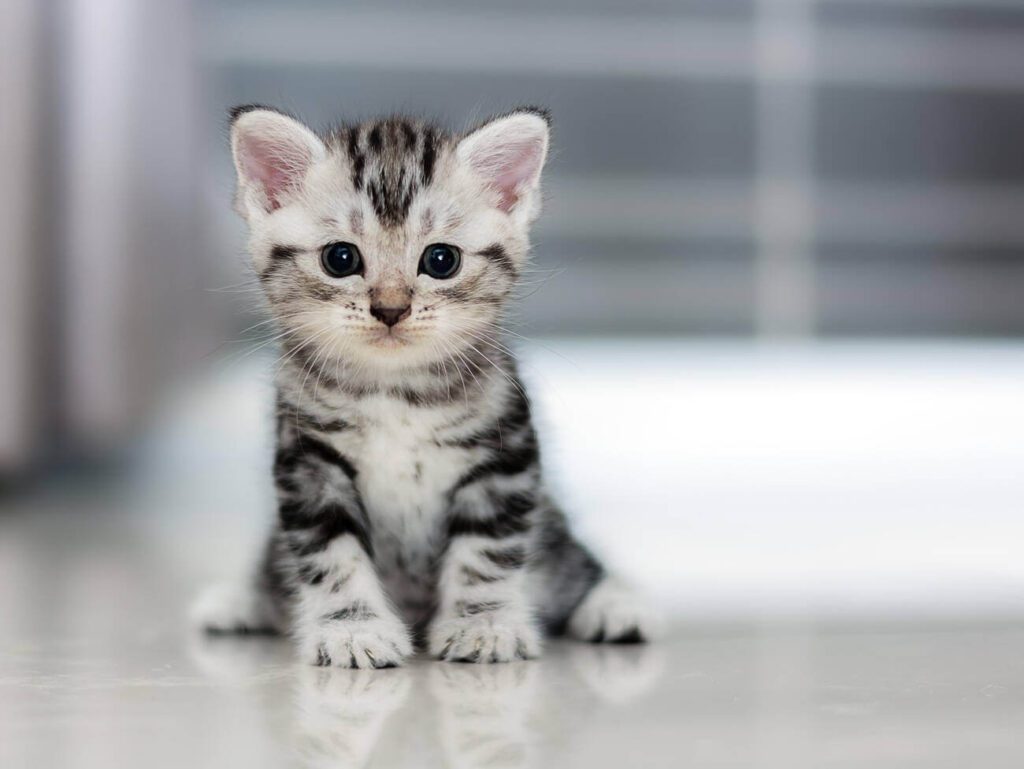
Cats have different dietary needs at various life stages. Here’s how to cater to them:
Kittens
Small Portions: Kittens have smaller mouths and teeth. Ensure the softened food is in tiny, manageable pieces.
Frequent Feeding: Kittens need to eat more frequently. Prepare small, frequent meals of softened food.
Senior Cats
Dental Health: Senior cats often have dental issues. Regularly check their mouth for any signs of pain or discomfort.
Hydration Focus: Older cats are more prone to kidney and urinary problems. Ensure their food has enough moisture to support hydration.
Adult Cats
Balanced Diet: Maintain a balanced diet with a mix of dry and wet foods to keep their teeth healthy and provide variety.
Regular Vet Check-ups: Regular vet visits can help monitor dental health and make dietary adjustments as needed.
Addressing Myths and Misconceptions
Myth: Dry Food Cleans Teeth
Many believe that dry food helps keep cats’ teeth clean. However, most cats swallow kibble whole, gaining little dental benefit. Regular vet check-ups and dental cleanings are more effective for maintaining dental health.
Myth: Cats Can’t Have Soft Food
While it’s true that cats have specific dietary needs, there’s no harm in softening their food if it’s done correctly. Ensure that the food remains nutritionally balanced and palatable.
Myth: Softened Food is Less Nutritious
Softening food does not inherently reduce its nutritional value. Using nutrient-rich liquids and avoiding excessive heating ensures that the food retains its nutritional benefits.
Creative Recipes for Softening Cat Food
Experimenting with different recipes can keep your cat’s meals interesting and nutritious. Here are a few ideas:
Chicken Broth Delight
Ingredients: Dry cat food, low-sodium chicken broth, a pinch of catnip.
Instructions: Add enough chicken broth to the dry food to moisten it. Let it sit for a few minutes. Sprinkle a pinch of catnip on top before serving.
Pumpkin Mash
Ingredients: Dry cat food, water, canned pumpkin puree (not pie filling).
Instructions: Mix equal parts water and pumpkin puree. Add this mixture to the dry food and let it soak until soft. Mash slightly with a fork.
Tuna Treat
Ingredients: Dry cat food, water, canned tuna in water (drained).
Instructions: Add a small amount of water to the dry food. Flake the canned tuna and mix it into the softened food. Serve immediately.
Yogurt Yum
Ingredients: Dry cat food, plain, unsweetened yogurt, water.
Instructions: Mix a spoonful of yogurt with a bit of water. Add this mixture to the dry food and let it sit until soft. Stir well before serving.
Troubleshooting Common Issues
My Cat Refuses to Eat Softened Food
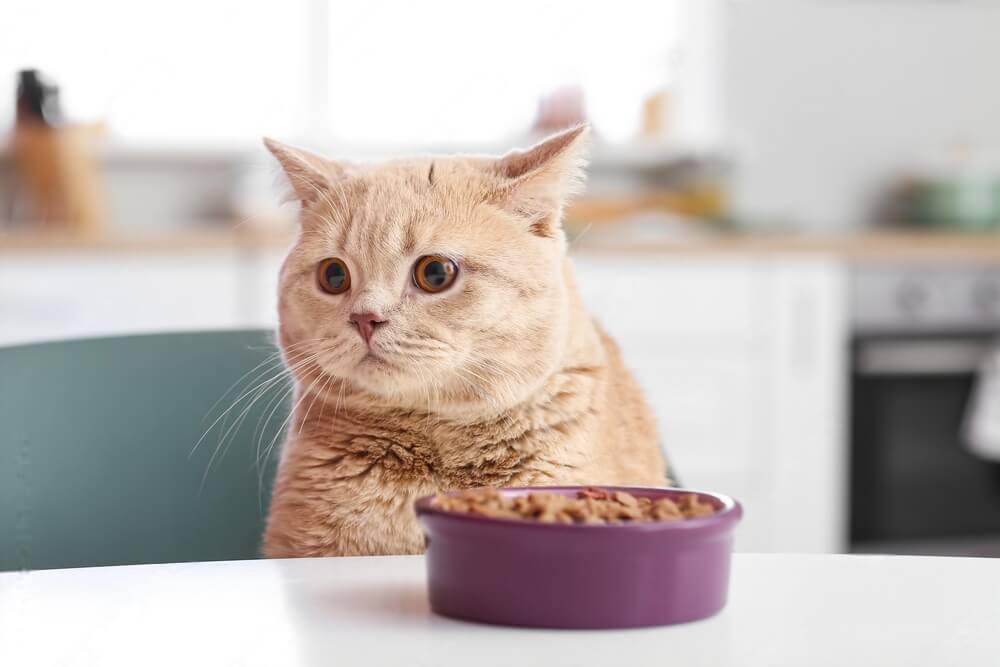
If your cat is resistant to softened food:
Flavor Adjustments: Try adding a bit of their favorite treat or a flavor enhancer like fish oil.
Texture Tweaks: Experiment with different levels of softness. Some cats may prefer slightly less mushy food.
Gradual Introduction: Introduce the softened food gradually by mixing it with their regular dry food.
The Food is Too Soupy
If you accidentally add too much liquid:
Drain Excess Liquid: Use a strainer to remove some of the excess liquid.
Add More Kibble: Add a bit more dry food to balance the texture.
The Food Smells Off
Always check the smell of the food before serving:
Check Freshness: Ensure the ingredients, especially liquids like broth, are fresh.
Proper Storage: Store any unused portions in the fridge and use them within 24 hours.
Is Dry Food Too Hard for Cats
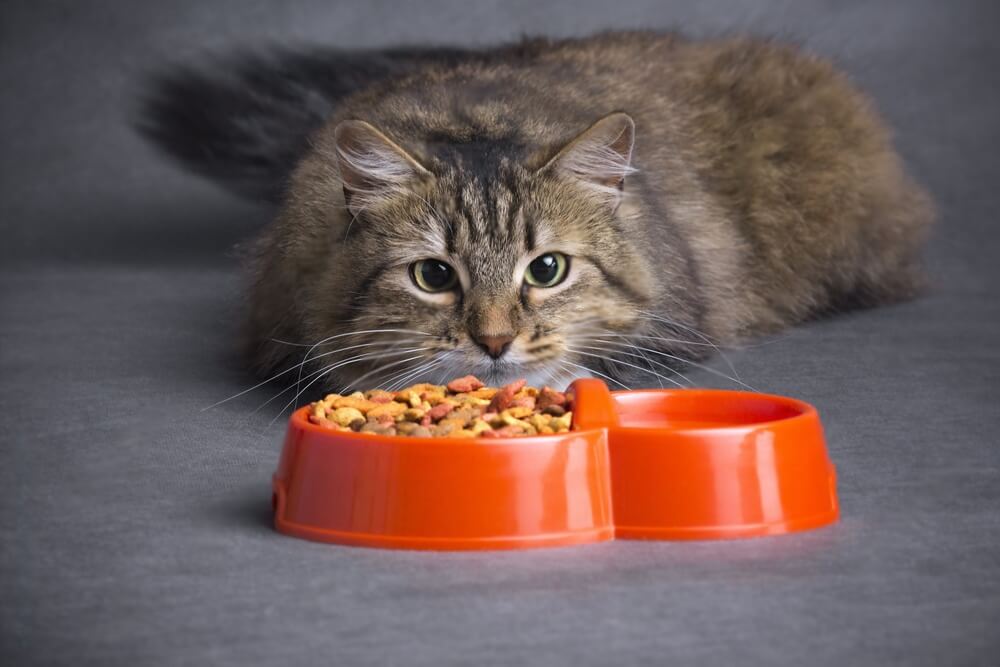
Cats are obligate carnivores, which means that they require animal protein to survive.
In the wild, cats eat mostly prey that they’ve caught, typically around 70% moisture by weight. This diet helps keep their kidneys healthy and hydrated.
On the other hand, dry food is only around 10% moisture by weight. That means your cat would need to eat nearly twice as much dry food as wet food to get the same amount of moisture.
Additionally, dry food is often made with plant-based proteins, which cats do not absorb as easily as animal-based proteins.
Over time, this can lead to health problems such as liver disease or pancreatitis. So, while dry food may be more convenient for you, it’s not necessarily the best option for your cat.
If you feed them dry food, make sure to supplement with plenty of fresh water and consider adding a wet food meal into their diet.
FAQ
Is It OK To Moisten Dry Cat Food?
Moistening dry food is a good way to make it more palatable and easier to eat for cats. However, be sure not to add too much water, or it will become too soft and lose some of its nutritional value.
Is Hard Food Bad For Cats?
Dry cat food is fine in moderate amounts. It’s important that your cat gets the right amount of moisture in their diet. Eating too much dry food may develop health problems such as kidney disease or liver disease over time.
How Can I Soften My Cat’s Dry Food?
There are several ways that you can soften your cat’s dry food. The easiest way is to soak it in warm water. Using a blender or food processor, you can also try blending the kibble into a soft texture. Finally, you can add canned tuna to your cat’s dry food to provide more moisture and make it easier for them to eat.
How Long Does It Take To Soften Dry Cat Food?
It depends on how much dry food you have and the type of food it is. For example, a small amount of dry cat food can be softened in one minute. Softening larger amounts of dry cat food can take longer, though.
Is It OK To Mix Dry Cat Food With Water?
Yes, it is. Adding water to your cat’s dry food will help soften it and make it more palatable. However, you shouldn’t add too much water, or the texture will change, and the nutritional value of the food will decrease.
Can I Mix Dry Cat Food With Milk?
Yes, you can, but you must use only water in the mixture to avoid adding too much moisture and affecting the food’s nutritional value.
Can I Mix Dry Cat Food With Canned Tuna?
Yes, you can. Adding canned tuna to your cat’s dry food will help make it easier for them to eat and increase the moisture content of the kibble.
Conclusion
If you’ve ever had a cat, you know it can be a picky eater. Some cats prefer their food soft, while others like it is crunchy.
If your cat is one of those who prefers soft food, there are a few things you can do to make hard cat food softer.
One way is to soak the food in water for a few minutes before feeding it to your cat. This will help to soften the kibble and make it more palatable for your feline friend. Another way to make hard cat food softer is to mix it with wet food or canned tuna.
This will add moisture to the kibble and make it easier for your cat to chew and digest. Using a food processor or blender, you can also try grinding the kibble into smaller pieces.
This will make the kibble easier to eat for cats who have trouble chewing larger pieces of dry food.



